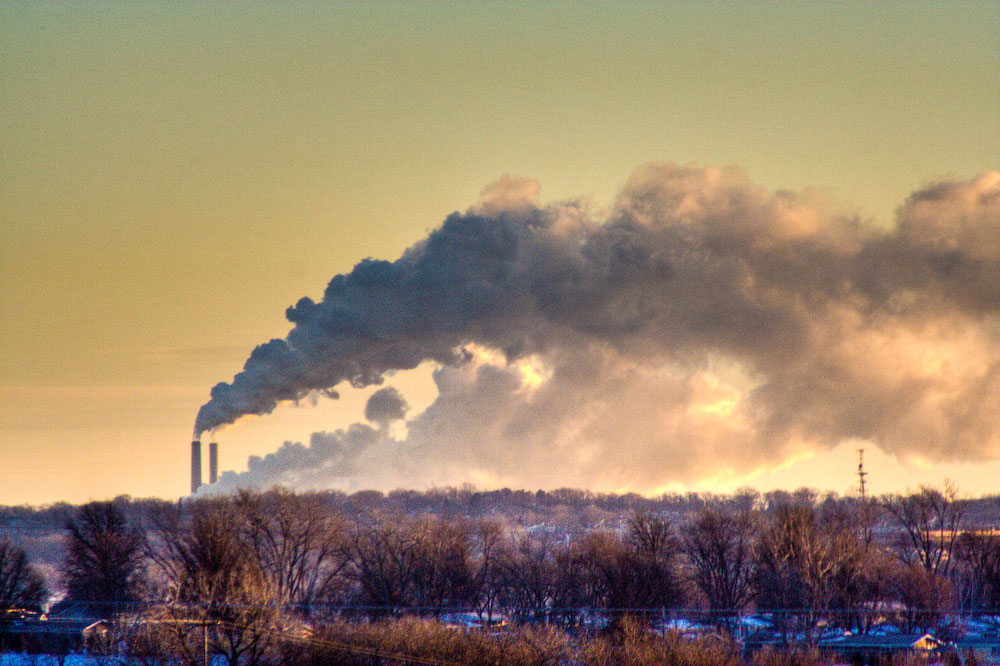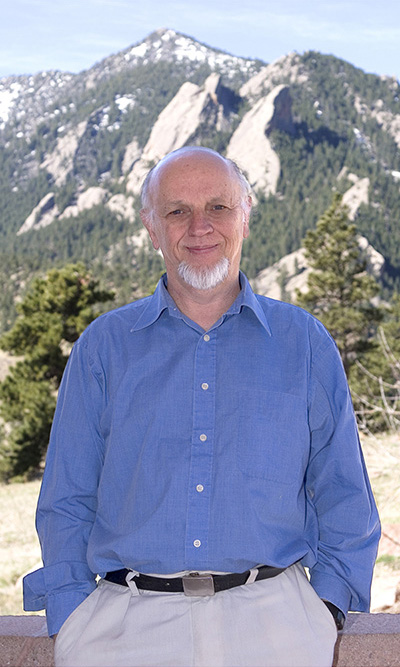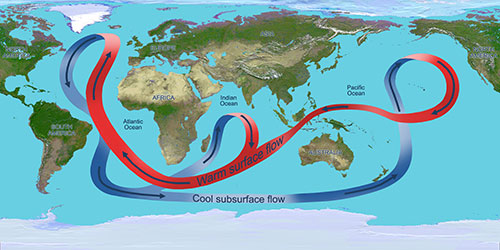Words about warming that matter
Revisiting a landmark IPCC statement
Jan 17, 2013 - by Staff
Jan 17, 2013 - by Staff
January 17, 2013 | With hundreds of scientist-volunteers at its heart, the Intergovernmental Panel on Climate Change is the world’s preeminent body for reviewing and synthesizing research on climate change. A single statement from the IPCC can reverberate for years. It can also be prone to misinterpretation in a variety of ways.

Emissions from fossil fuel burning include greenhouse gases, which act to warm the climate, as well as aerosols, which can block as well as absorb sunlight. (Creative Commons photo by Nixer.)
NCAR scientist Tom Wigley and longtime colleague Ben Santer (Lawrence Livermore National Laboratory) have played key roles in IPCC assessments going back to the panel’s origins in the late 1980s. Now, in a paper published in November 2012 in Climate Dynamics, they cast new light on one of the most prominent findings of the last major IPCC report, issued in 2007. It’s one that put forth a critical link between emissions and global climate:
“Most of the observed increase in global average temperatures since the mid-20th century is very likely due to the observed increase in anthropogenic greenhouse gas concentrations.”
Several observers argued that this was an overstatement, including one scientist who testified before Congress in 2010. But in their new analysis, which involves many thousands of simulations performed with a simplified climate model, Wigley and Santer conclude that the IPCC actually erred on the side of caution.

Tom Wigley (©UCAR, Photo by Carlye Calvin. This image is freely available for media & nonprofit use.*)
“Our results provide strong scientific support for the IPCC AR4 statement [above],” says Wigley. “Indeed, the results indicate that the statement is almost certainly too conservative.” Based on their own findings, the researchers suggest an alternative they believe would be more fitting—one that implies that there are human activities cooling the climate as well as warming it:
“It is very likely [more than a 90% chance] that the warming due to anthropogenic greenhouse gases alone is greater than the full amount (not just “most”) of the observed warming since the mid-20th century.”
Why the difference? The main reason is aerosols—tiny particles and droplets that can block enough sunlight to influence global climate.
In their new modeling, Wigley and Santer reinforce prior work showing that the cooling caused by such aerosol particles has masked a significant part of the total warming that would have been produced by the human-caused increase in greenhouse gases. Analysts who ignore aerosol effects on climate, they maintain, are akin to accountants who produce a bank account summary that considers only deposits and omits withdrawals.

Ben Santer (Photo courtesy Lawrence Livermore National Laboratory.)
The problem is that aerosols are difficult to measure and monitor across the entire globe. Moreover, some types of aerosols—particularly black carbon, or soot—absorb enough sunlight to produce a warming rather than a cooling effect. Aerosols also influence cloud formation, which in turn plays a major role in the globe’s radiation balance—how much heat goes in and out of the system. As a result, IPCC reports have presented a wide range of possibilities for the total direct and indirect effects of aerosols on climate, even including a very small chance that the influences cancel each other out for a total aerosol effect close to zero.
Such uncertainty has now diminished, according to Wigley and Santer. Taking into account the actual warming observed in the last century, their new simulations imply a narrower range of possible aerosol effects, in line with previous work by Peter Stott (UK Met Office) and others.
"The magnitude of climate cooling from aerosols is still uncertain," says Wigley, "but our analysis shows that it is now virtually beyond dispute that they have a net cooling effect."
One of Wigley and Santer’s goals in their new analysis was to test whether the IPCC’s conclusion was reasonable. “In our view, it is important to provide a traceable, ‘single source’ statistical foundation for the IPCC statement,” says Wigley. “In doing so, we produced new scientific results that provide firm scientific support for what the statement says.”
To do this, they used a simple but powerful climate model called MAGICC to produce a detailed, probabilistic analysis. With the aid of MAGICC, they were able to perform thousands of simulations in order to comprehensively explore uncertainties in key model parameters as well as uncertainties in aerosol effects on climate. The authors found that their results for changes in global mean temperature were in very close agreement with observations from 1950 onward, provided that the simulations included IPCC’s mid-range estimate for aerosol effects.
“This is a strong endorsement of the credibility and reliability of climate models,” says Wigley.

The Atlantic Meridional Overturning Circulation, which pulls water northward through the upper Atlantic Ocean and southward at deeper levels, is part of the global "conveyor belt" of ocean circulation. (Image courtesy NASA/JPL.)
For the years prior to 1950, however, a puzzle remains. Wigley and Santer were unable to reproduce the full amount of warming observed earlier in the 20th century. It was once thought that solar effects could explain most of the early-20th-century warming. But recent studies show that solar changes were likely too weak to account for the temperature rise.
Instead, Wigley and Santer believe the observed warming before 1950 may be partially the result of a naturally occurring speed-up in the Atlantic Meridional Overturning Circulation. The AMOC (see illustration, above) is part of the “conveyor belt” through which warm surface water in the tropical Atlantic flows north in the Atlantic Ocean, then chills, descends, and flows south.
IPCC statements are crafted by scientists through a multi-year process and approved by the governments of virtually every nation on Earth before being released. This gives them unusual weight, but also highlights the need to define terms and describe the process as clearly as possible.
Wigley and Santer note that several types of ambiguity are embedded within the 2007 IPCC statement. For example, the terms “most,” “increase,” and “mid–twentieth century” were not rigorously defined. Though different people may have different views on what “most” means, the new probabilistic results allow for any definition from 51% on up to be evaluated quantitatively.
A 2010 review of IPCC procedures by the InterAcademy Council (see PDF of executive summary) called for a more explicit accounting of the process leading up to major statements, especially how uncertainty is characterized and quantified. The analysis by Wigley and Santer provides such an accounting of the major uncertainties underlying the headline-making IPCC statement cited at the start of this article. The analysis also rebuts formal congressional testimony (see PDF) claiming that the 2007 IPCC statement was incorrect.
Wigley stresses the importance of considering aerosols side by side with greenhouse gases, not only because of their countervailing effects on climate, but also because of the stark differences in how greenhouse gas and aerosol influences evolve over time.
“The offset from aerosols will only last as long as the emissions of sulfur dioxide continue,” notes Wigley. In contrast, carbon dioxide is far more long lived, and as a result, “the warming influence of greenhouse gases will continue for many centuries.”